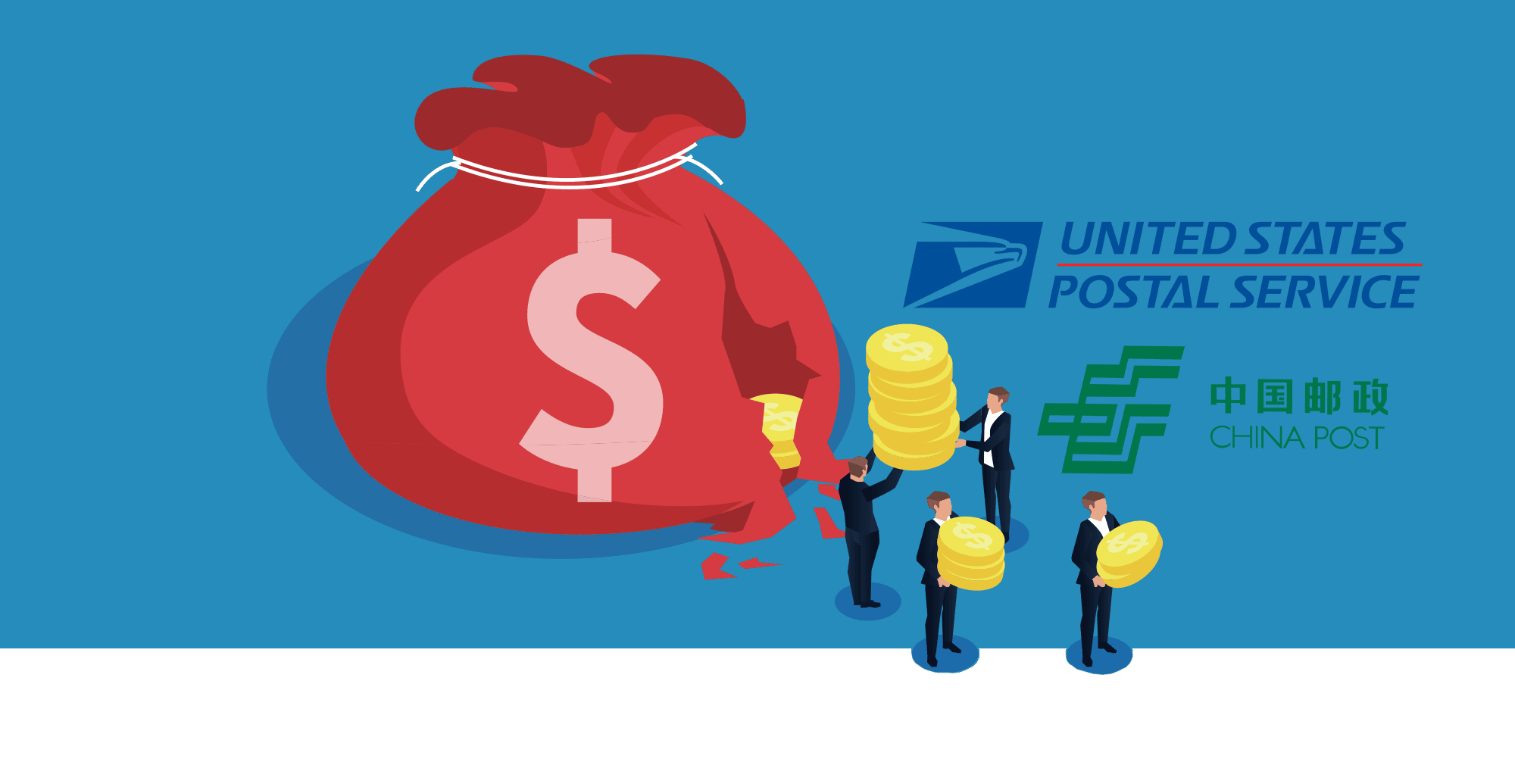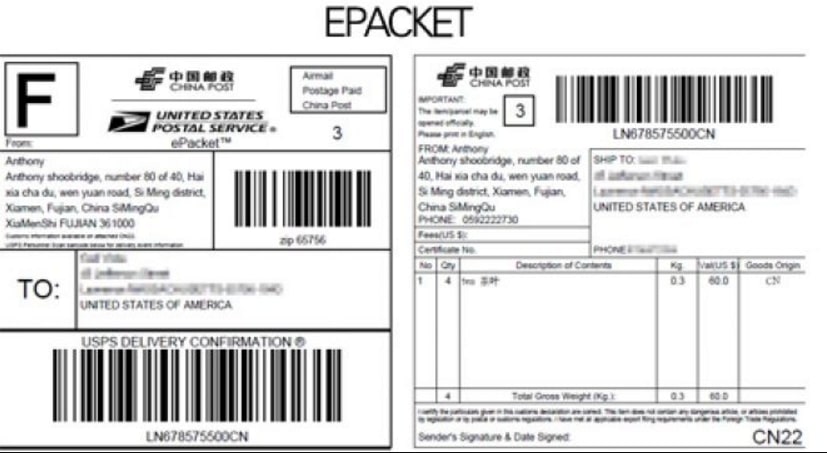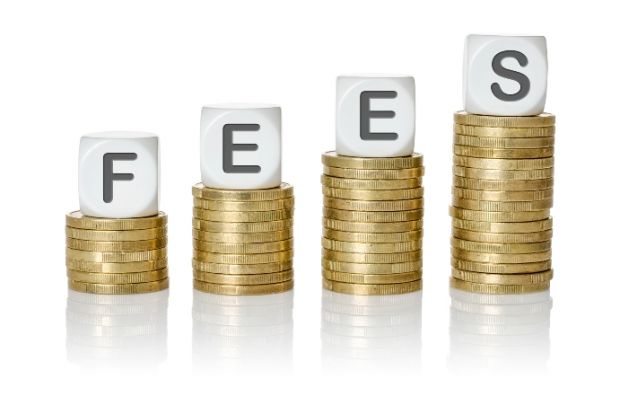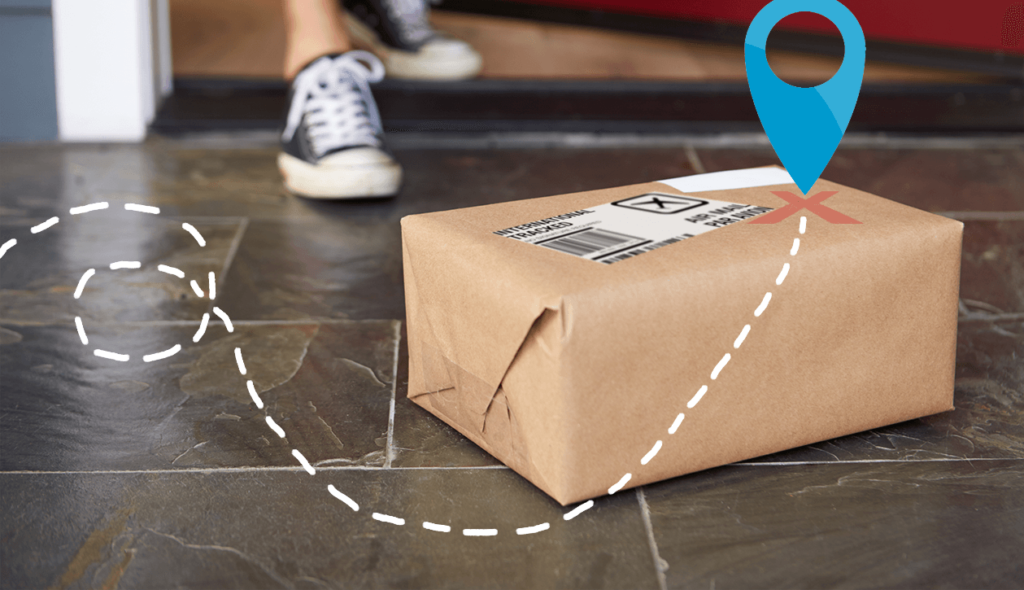Why and How China Post and USPS are Killing Your Private Labeling Business

Update May 11, 2021 – Since January 1 of 2021, countries with more than 75,000 metric tons of inbound mail per year can set their own terminal dues rates.
Update June 8, 2020 – The rate increases to occur over the next 5 years have been announced (see below).
Update September 25, 2019: The U.S. and United Nations reached a deal that would keep America in the Universal Postal Union in return for more flexibility in setting their own postal rates.
Update October 2018: The Trump administration has announced plans to pull out of the Universal Postal Union which would effectively end ePacket.
For many years, sellers in China have been able to ship for less from China to America than local American sellers can domestically, thanks to something called ePacket. In September 2019 this was all set to change, however, the Universal Postal Union and the United States reached a deal that will allow countries to set rates for individual countries more freely.
Is this the end of ePacket and cheap shipping from China? Continue reading to understand the history of ePacket and understand whether it's the end of cheap shipping from China.
Related Listening: Shipping From China Made Easy with Freightos
The Background – In 2010, USPS Makes a Deal with China Post/Hong Kong Post
In 2010-2011, USPS entered into an agreement with Hong Kong Post and China Post that came into effect in 2011 to offer a shipping option called “ePacket”. What an ePacket basically boils down to is that merchants in Hong Kong and mainland China could now ship packages up to 4.4 lbs, with tracking and 7-10 business day delivery times. But here's the kicker – shipping a package from China to the U.S. is about $1 cheaper than from within the United States. That's not a typo. It's $1 cheaper to ship from China to the USA than from the USA to the USA.
USPS reports its loses, on average, to be $1.10 for each package it delivers from China. In fact, in 2014 USPS reported that they lost over $75 million delivering foreign mail. U.S. congress held meetings regarding the subject in 2015.
So why would USPS make such a stupid agreement? Well, it's not necessarily USPS's fault. USPS is bound by an agreement with the Universal Postal Union (ever heard of it? Me neither). The Universal Postal Union (UPU) is one of the oldest international organizations in the world dating back to the 19th century. Its original goal was to allow people and businesses to mail letters for a flat rate anywhere in the world and it also helps subsidize poorer countries' mail delivery. Seems well-intentioned right? Well, then ecommerce happened.

The UPU has fallen behind on times and hasn't adjusted for the sudden surge in ecommerce or China's newfound wealth and unfortunately, nothing is changing for at least a couple of years (see below for what may change in the future and what you can do in the meantime).
The agreement USPS made with China for ePacket wasn't that stupid. USPS actually loses less money with ePacket than if Chinese suppliers shipped with regular mail and the rates set by the UPU. However, ePacket provides exceptional tracking and delivery times – two critical demands of ecommerce consumers. Without ePacket, the total volume of packages coming from Chinese suppliers would almost certainly be lower.
A Double Whammy – De Minimis Raised in 2016 to $800
But, wait. There's more!
Not only do Chinese suppliers get the benefit of shipping for cheaper than you can, but they also get to ship their products to consumers duty-free.
In 2016, the U.S. raised the de minimis value up to $800. This means any package shipped under $800 to the United States gets to enter duty-free. So while other Chinese suppliers can ship to other countries like Canada with reduced shipping rates the same way they would to the U.S., the de minimis value in Canada is closer to $100 meaning consumers get hit with annoying duties and taxes upon delivery for anything over this amount.
September 2019 – The U.N. and U.S. Reach a Deal
On September 25, 2019, the United States and United Nations reached a deal for America to stay in the UPU in return for being allowed greater flexibility in setting prices. In other words, the U.S. can now set rates for mail from China and other countries. The U.S. will be allowed to set its own postal rates starting in July 2020 and other countries will be allowed to starting in 2021. There will be a five-year period of phasing in new rates.
The maximum annual increases for all countries cumulatively from 2020 to 2025 will be between 119%-164% (with China being on the upper end). This works out to annual increases of 15% in 2021 and 2022, 16% in 2023 and 2024, and 17% in 2025.
On November 16, 2020, U.S. Postal Service announced new prices for 2021. The higher prices were effective Jan. 24, 2021, and rise by 3.5 percent overall.
Another country that has raised its rates was Japan. Beginning April 1, 2021, it costs more to receive small packages from Japan in order to enable countries like the United States to cover their delivery costs.
About 30 countries increased their rates for US parcels on July 1, 2020. The other 160 UPU members still have the right to increase the rates they charge to receive US packages.
Since January 2021, other UPU member countries can charge higher rates for packages from countries other than the U.S. Higher fees are allowed for countries that ship at least 75,000 metric tons of inbound mail per year.
China Post ePacket vs USPS Rates
So here's what most of you care about: what does it cost to ship an item from China compared to from within the U.S.? Below are the approximate rates (for USPS I calculated shipping an item from Washington State to Florida).

You can see from the above anything under 4 ounces is actually cheaper to ship from China. From 4 ounces to 8 ounces the rates are pretty comparable. Once you start hitting about 2 lbs, the prices from shipping within the U.S. start to get comparatively cheaper and cheaper than shipping from within China.
Is This the End of ePacket and Cheap Shipping from China?
It remains to be seen how much postal rates will increase from China. The chances are good it will be quite significant and it may be part of a larger U.S.-China trade deal. However, new postal rates won't kick in until July 2020 and they will gradually be phased in over five years. In other words, don't expect cheap China shipping to disappear overnight.
What Should You Do Until ePacket is Eliminated?
Until ePacket and cheap China shipping get eliminated, here are some steps to take:
- Avoid undifferentiated items under 1 lb
- Try to avoid undifferentiated items from 1 to 4.4 lbs
- Avoid items under 4.4 lbs that are not fulfilled by Amazon
If you're selling undifferentiated items (cell phone accessories, small electronics, hair extensions, etc) that weigh under 4.4 lbs, in the long run, it will be next to impossible to compete with Chinese suppliers (at least if you don't use Amazon FBA). I personally know of a Chinese supplier in Beijing running a multi-million dollar ecommerce business targeted to Americans with a massive warehouse just outside of Beijing. They employ, as they describe it, ‘an army of peasants' to do all of their order fulfillment. You can't compete with this: they pay less in shipping rates and less in staffing and fulfillment costs.
Who Wins If ePacket is Eliminated?
If ePacket and cheap China shipping are eliminated the big winners are going to be any North American sellers who compete against Chinese sellers shipping directly from China. This means anyone selling small and light items is likely going to see a slight boost to their business.
Stock holding sellers will also get one more advantage over dropshippers. This also likely is going to help Amazon somewhat as it will severely hurt competitors like Aliexpress and Wish.com.
The big losers are going to be said Chinese sellers as well as anyone who dropships from China. Dropshipping from China was a burgeoning industry even in America and it's driving the nail in the dropshipping coffin a little bit deeper.
Conclusion
ePacket and cheap China shipping still exist for the time being. How much rates will go up when shipping from China remains to be seen.
If and when rates do go up significantly, those selling small and light items are likely to have a small bonanza thanks to the elimination of many of their Chinese counterparts.
Do you think the new deal that the United States has struck with the Universal Postal Union will be a boon for American sellers? Or do you think the Chinese will still find a way to gain an upper hand?






“Seems well-intentioned right? Well, then ecommerce happened.”
This statement makes it sound like e-commerce wasn’t expected when ePackets were introduced.
However during the USPS press release they introduced ePackets as a “structured to foster growth in e-commerce”:
https://about.usps.com/news/national-releases/2011/pr11_037.htm
Yes, when epacket was introduced but not when the universal postal union came into being.
If this goes through and postal prices increase as much as is speculated, I would not be surprised to see a new spin-off from Alibaba to establish huge distribution centers in the USA, Canada etc. (somewhat like Amazon)… which of course might house all those Aliexpress sellers goods, ready to ship under a FBA agreement – except it would be “Fullfilled By Alibaba”, not Amazon. And of course, this would provide Alibaba with a new and very lucrative revenue stream… albeit a loss of revenue via Aliexpress.
Amazon is pushing for these rate increases to encourage Chinese sellers to join their FBA program and obtain more than 50% control of online sales in the USA. But, that may come back to haunt them.
For starters, if that percentage gets to high, this might put Amazon in a monopoly situation and face antitrust laws. That would leave an opening for other well funded companies to setup shop and compete… I stress well funded.
Imagine if Alibaba (who have very very deep pockets) were to setup an online eCommerce platform and distribution centers in the USA, with their own suppliers from Asian countries, primarily China.
Alibaba has the financial muscle to do this. Would they? Not likely, but it is possible.
I think the fallout from all of this is going to be very interesting, especially if you consider the deadline is July 2020 followed with a presidential election in November. Have to wonder what the financial markets will be like next summer and fall.
You could be right :)
I work for USPS at a Processing and Distribution Center. This past Sunday, Feb 10, 2019, there were NO small E-packets received from the International Service Center that had a China return address. There were several thousand foreign pieces of mail and only one large E-packet that I processed was from China. All of the small plastic packages now have Philippine return addresses.
Interesting – any ideas why this was?
Great article. I guess the only way to do it is to lower free import allowance by mail. In Switzerland where I live it is a nightmare with shipments from China. Swisspost is heavily taxing wherever they can. Example: 30USD rainjacket plus 20USD shipping gets picked out for inspection and that is the result: 13USD inspection fee, 8USD duty, 18USD broker fee and on top of all of these amounts 7,7% VAT. That gives a total of 45.50USD for an item value of 30USD!! Free import is normally up to 60USD but in Switzerland each courier/national postal service does their own import on behalf of customs. So they can pretty much add taxes/duty as they like and as long as it get over 5USD they charge hefty fees for handling China packages. That is their action against buyers from China :( If I want to get my items in Switzerland I have to ship it to the US and then re-ship to Switzerland in a large box to minimize import fees / broker fees and import bulk
Agreed. It mostly comes down to what they call the ‘de minimis’ value and the U.S. has an absurdly high value.
Dave, I was considering getting into private label with Amazon as a new side business. How do you think Trump pulling out of this treaty affects the profits to be made doing that now?
No – it makes it more easy if anything.
Great story, I am Glad to see more and more people are writing about this.
I’m in the same boat as many of the others reading this. I manufacture and sell small parts 280 sku’s All 4oz and under.
The Chinese can do a simple search on eBay or amazon and see what products are hot. They find a hot seller, clone it in China and knock out the US business that originated the product.
They have got many of my most popular products I’ve the years. I was Easily grossing 300k a year on amazon alone. I am down over 78% last year with the same catalog. Chinese companies have knocked off my products and sell two of them for the price I was getting for one. Great for the consumer you can get two parts for less than the price of one!
I gave Up trying to compete, I stood my ground and kept my prices the same. I have However branded all my parts “100% Made and shipped from the USA”
To some folks , myself included paying more to support US businesses is worth the higher price.
I am Going to take your advice and consider moving some of my parts to FBA and look into making larger parts that weigh too much for the Chinese to bother with.
Thanks again!
Hi Jim – sorry to hear about the effects on your business. Focusing on 2lbs + items can be a good strategy to give you a more level playing field.
Our ‘Made in America’ products went from 8 employees to just me, and I will be going out of business and looking for a job in the next 6 months, all as a direct result of cheap shipping from Asia. Multiply that by tens of thousands of small businesses like ours and a real problem starts to emerge.
I thought about moving the business to Hong Kong but morally I would feel like I was a participant in a ‘Gang Bang Rape’ of America… because that is what cheap Asian shipping is!
Sorry to hear about your business troubles!
Mr. Bryant:
Thanks for shedding some light on this. Now that our government is quizically attacking Amazon, one of our most successful modern businesses, it’s the best time to petition our representatives to fix the USPS self-serving practices.
We started a new White House petition addressing this, and we need a ridiculous amount of signatures and shares by the end of this month. Think it can be done? Can you help spread the word?
https://petitions.whitehouse.gov/petition/stop-us-postal-service-subsidizing-shipping-rates-foreign-competitors-money-us-businesses
Oh AND I was shipping items 4 oz and under to Europe and all around the world but the prices went from $8 to $12 something over the past 5 yrs. I have barely any foreign customers now. I’m getting bitch slapped left and right.
USPS has murdered my business. Not only in first class but flat rate envelopes, padded and region A. I made 80k a year now I’m down to nothing. Can’t afford to exist – solution – falling ass backwards into drop shipping from *drum roll* CHINA. Thought about buying the items wholesale, they’re small but after calculating is make no money. The usps charges just as much if not more than people pay for the items….and what I male is after ebay, PayPal and product cost fees. There’s no profit to be made. Even in my original business – clothing. I also make custom costume prosthetics for Halloween and the Chinese have ripped off my designs. The shipping is so high and people will only pay so much. Usps doesn’t care about us, they keep raising their rates and blaming it on gas prices…it just eats whatever is left of my profit. So now I am a PIMP for Chinese goods. Sad. But I need to pay my growing piles of bills. Idk what to do any more. This is bullshit
Great comments.I am also; feeling your pain.This melting pot of America can no longer stick to its roots and do what is right for itself.A tree with no roots will surely fall..So plant a new seed
“One might argue it hurts manufacturers (which would certainly grab Trump’s attention) but that correlation isn’t so clear.” WHAT?!?!? Are you kidding me?? Of course this hurts American manufacturers – I happen to be one! Not only is it cheaper for my competitors to ship their products to my own LOCAL market that it is for me, but they are also able to serve their own country’s market. This means they have a MASSIVE advantage in customer base size: ALL of China AND ALL of America, not to mention all the other countries they can ship to internationally at these absurd rates. As a result, they have huge pools of capital compared to their US counterparts. Meanwhile an American manufacturer can barely compete in his own backyard, let alone by selling internationally which is laughably impossible due to our absurdly anti-competitive shipping rates. This is quite literally affirmative action applied to international business. The WTO is not an elected governing body and we are free to reach BILATERAL trade agreements with whomever we please. We are not subject to international organizations any more than we elect to be. ePacket needs to be killed, it is not a trade agreement required by the WTO to begin with, it is a relatively new joke foisted upon Americans.
Those cheap Chinese goods would make there way to America with or without epacket. The greater damage is to businesses already importing from China. There’s a lot of ways cheap Chinese goods are damaging to American manufacturing but epacket is fairly negligible. Also, epacket is entirely USPS’ doing, which is subsidized by an elected body, and has nothing to do with the WTO.
“There’s a lot of ways cheap Chinese goods are damaging to American manufacturing but epacket is fairly negligible.” An appallingly out of touch statement from someone who has clearly never owned a manufacturing plant.
Epacket essentially only added reliable tracking. It also only affects items under 2 lbs. I understand your business may be affected more than many and I sympathize with you but as a whole it’s a small part of the problem. Maybe I’m misunderstanding the true effects and I’m always open to being educated :)
agree; best article I’ve seen on subject. but I surmise it’s even worse than you say – e.g. your chart says they getto pay $1.63/1 oz. But they seem too be very happy to sell for $.99 w. free shipping.
Trump has threatened to renegotiate nafta and other agreements; he could also pressure upu if he knew abt this and wanted to. and/or impose a tariff on lightweight goods from enemy countries if congress agreed.
p.s. – consumers moan that when they want to return the chinese junk, it costs more to send it back thna they paid in first place.
In some ways it’s a bit more tricky to negotiate than NAFTA because this isn’t a trilateral deal but a deal with 180 other countries. But regardless, hopefully things change soon.
Hello Dave, I noticed all of the products in Aliexpress don’t have e-packets anymore. @ days ago there were still e-packets. Is it gone now?
It should still be there in some capacity – albeit maybe more expensive- as I think it’s still some time before being phased out.
Hi ! Nice article David. You were talking about Chinese supplier from Beijing, I live in Beijing. So is it possible if I ask for his contact info ? Want to see how its made from inside
That info I keep private :)
what a shocking statistics you have provided…i had a plan to setup small business in china but your article made me to re think again on it…thanks alot man for writing this informative content with us
you’re welcome :)
I’m a seller from china,i agree your opinion and surprise that you know the detail information.You’re wise. Hope for your communication.
Great info., great article – as always!